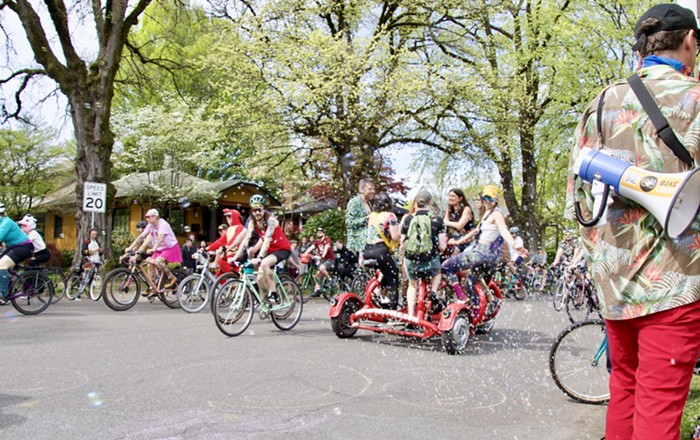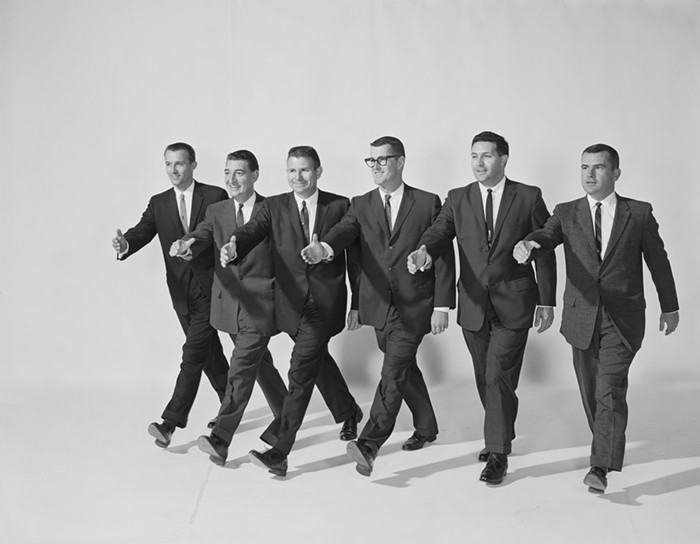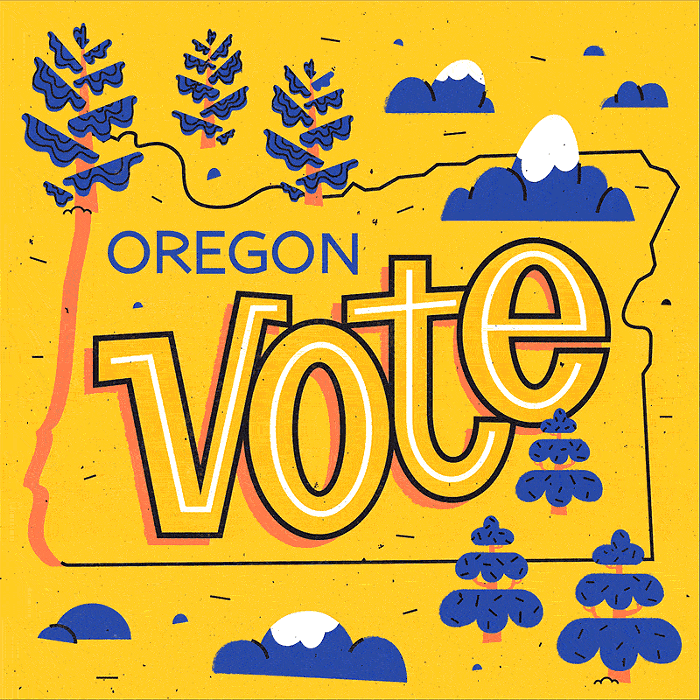CHICAGO IS COMING for you, Portland.
While your officials fete fawning visitors, dazzling them with tours of the Rose City's lauded bike network, the Windy City is hard at work. While you sleep snugly, secure in your notion of Portland as America's bicycle mecca, they're planning hundreds of miles of premium bikeways on the shores of Lake Michigan.
Their sneering mayor, Rahm Emanuel, boasts Chicago will soon be "the most bike-friendly city in the country."
And it's not alone. In recent years, New York City has delved headlong into bikeway innovation. Minneapolis, Washington, DC—even Indianapolis—are all making strides toward the top spot.
And what are you doing about it? According to many of the folks banging the drum for Portland to be the best cycling city it can be: not much.
"Everybody around the table here in Portland knows that complacency has been a problem in this town for a long time," says Jonathan Maus, editor of the blog bikeportland.org. "We've spent a longer time talking about how great we are than doing the things it takes to stay great."
Speaking with Portland cycling advocates, you hear this all the time. For all the love the city gets—and with more than 300 miles of bikeways and nearly double the percentage of bike commuters of any other big city, we truly do have something to be proud of—there's a fear Portland's lost the fire that got us here.
"We've done nothing but give tours for three years in this city," says Chris DiStefano, a spokesman for cycling apparel brand Rapha and inveterate Portland bike advocate. "All the while, there are these cities that are just kicking ass."
Some examples:
•Late last year, Chicago opened a two-way "green lane"—where car traffic is separated by obstacles from bike paths—in the city's car-choked Loop. These protected bike lanes are considered the crown jewels of bike infrastructure, and Chicago has aspirations to build more than any other city in the country by 2020.
•Washington, DC, built green lanes into some of the city's most-famous and well-used throughways. "They've put a protected bike lane in the middle of Pennsylvania Avenue," Maus says. "That's head and shoulders above anything that Portland's done."
•In 2007, New York City installed a protected bike lane on Manhattan's bustling 9th Avenue. That's an infrastructure feature you're hard-pressed to find in Portland, on a segment of street far busier than any in our fair city. (Businesses next to the bike lane report a 49 percent increase in sales, according to one study.)
•Indianapolis, not a city traditionally seen as a bike powerhouse, has revealed an ambitious plan to add 200 miles of bikeways in the next dozen years.
These strides are possible, in part, because of the relative paucity in these cities' bike networks to begin with. As Maus puts it: "It's easy to go from nothing to something, and that's what these other cities are doing. It's hard to go from good to really great."
But that's what Portland wants—to continue the push of innovative, multi-modal planning that's made it the darling of urban planners around the nation. We want to be great.
To do that, advocates say Portland would do well to distance itself from its reputation for endless process. It's got to plug the holes in its bike network, and create bikeways on its busiest roads that—like 9th Avenue in New York or Dearborn Street in Chicago—make even novice cyclists feel comfortable and safe.
"Basically what we have to do is create the kind of riding environment that people feel when they're at Sunday Parkways," Maus says.
And, to some degree, that's happening. Upcoming improvements to the popular northward bike route on North Williams will offer cyclists more room, and stretches of SW Broadway, SW Moody, and NE Multnomah now have protected bikeways.
What the city's missing, according to the Bicycle Transportation Alliance (BTA) and others, are marquee green lanes on the city's busiest streets.
"Everybody's finding a way to bring more people into their commercial corridors," says BTA Advocacy Director Gerik Kransky. "That's the next big step for us."
Portland also needs to improve on its neighborhood greenways, he says, and fix some of the scary, unsafe patches of Portland's bike network.
To that end, the BTA just released what it calls a "Blueprint for World-Class Bicycling" in Portland. It's a guiding document highlighting a host of projects Portland's leaders should look to in the next five years.
They include protected bike lanes on NE Broadway, SE Foster, and throughout downtown. Fixes to Barbur Boulevard, a new pedestrian/bicycle bridge over I-84, and the completion of the long-discussed North Portland Greenway are also suggested.
They are big changes, and potentially expensive—but they're necessary, the BTA says, if Portland hopes to beat back the wannabe likes of New York and Chicago.
"We believe the city could do more and has slowed down, while other cities are catching up rapidly," says BTA Executive Director Rob Sadowsky. "We have to do our job of winning the hearts and minds of people."














